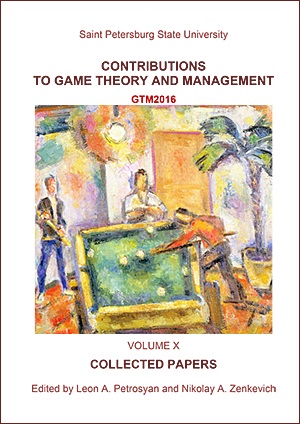Design and Simulation of Coopetition as Lead Generating Mechanism
Abstract
This paper considers coopetition as form of interaction between companies and agents. As the method to analyse coopetition internet-based platform is used and modeled. The most important part of the research is simulation of lead-generation internet-based platform. As a result, potential industrial impact that can be caused by a lead generating internet platform-based coopetition among companies, which operate in one industry.
Keywords:
coopetition, internet-based platform, lead generation, agent- based simulation
Downloads
References
Downloads
Published
How to Cite
Issue
Section
License
Articles of "Contributions to Game Theory and Management" are open access distributed under the terms of the License Agreement with Saint Petersburg State University, which permits to the authors unrestricted distribution and self-archiving free of charge.




